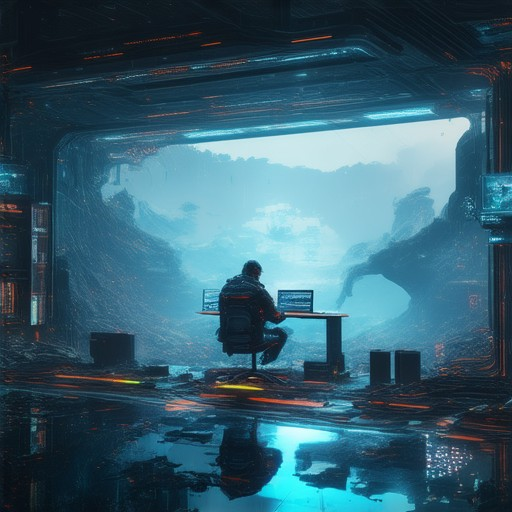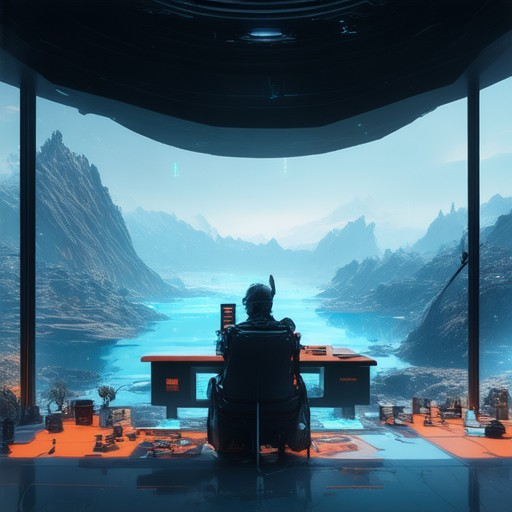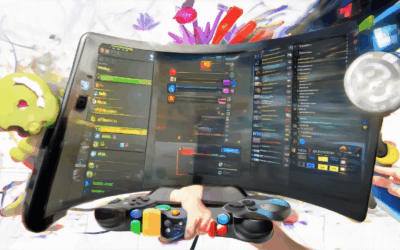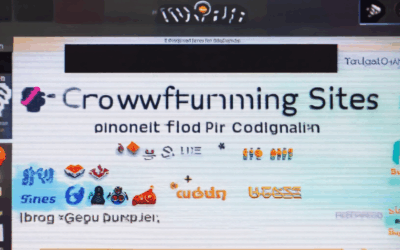Unlocking Creativity: Effective Game Design Tutorials for Every Skill Level
Creativity is the cornerstone of game design, but finding the right resources to unlock your potential can feel overwhelming. Whether you’re a seasoned developer or just starting out, effective game tutorials can transform your approach, offering clear guidance, practical examples, and actionable insights. This comprehensive guide explores what makes a great game tutorial, the best ways to learn game design, and how to navigate the complexities of creating your own games. From understanding the psychology of players to mastering coding basics, we’ll walk you through everything you need to know to elevate your game design skills. With a focus on step-by-step tutorials, real-world applications, and expert tips, this article is designed to empower creators of all levels, ensuring you can unlock your full creative potential and craft unforgettable experiences.

What Makes a Good Game Tutorial?
A well-crafted game tutorial enhances the player experience by providing clear, concise guidance without disrupting the flow of gameplay. Here are the key characteristics of an effective game tutorial:
- Skippable and Non-Intrusive : Tutorials should not force players to sit through them repeatedly. Allow players to skip or pause the tutorial as needed.
- Always Accessible : Important tips and information should be available at all times, ensuring players can refer back to them whenever needed.
- Clear and Concise Content : The tutorial should focus on the most critical aspects of the game, avoiding unnecessary details or jargon.
- Visual Aids : Incorporate screenshots, diagrams, or video demonstrations to make complex concepts easier to understand.
- Player Control : Provide options like pausing, rewinding, or skipping to give players full control over their learning pace.
- Relevant and Targeted Information : Tailor the tutorial to common scenarios players will encounter, including basic controls and common challenges.
- Design Consistency : Ensure the tutorial aligns with the game’s overall aesthetic and style to maintain immersion.
For example, successful game tutorials often include step-by-step guides, tooltips, and contextual hints that appear when needed. Games like The Legend of Zelda and Fortnite are known for their intuitive tutorials that ease players into the game without overwhelming them.
Looking for more resources? Check out Indie Dev Games for comprehensive guides and tips tailored for independent developers. Our platform offers everything you need to create and optimize your game tutorials, including development tools and community support.
Best Way to Learn How to Make Games
Learning how to make games involves a combination of structured learning, hands-on practice, and community engagement. Here’s a comprehensive guide to getting started:
- 1. Start with Tutorials and Resources
- Explore YouTube channels like CGPGames and The Game Dev Academy for foundational tutorials.
- Enroll in online courses on platforms like Udemy and Coursera . Look for courses specifically tailored to game development, such as those focusing on Unity and Unreal Engine .
- Utilize free resources available on platforms like Coursera and .
- 2. Build Projects to Apply Knowledge
- Start with simple projects like 2D games using Python or JavaScript. Frameworks like Pygame and Phaser.js are great for beginners.
- Progress to 3D games using Unity once you feel comfortable with basics.
- Document your progress and share your work with peers for feedback and encouragement.
- 3. Engage with Communities
- Join forums and communities like Reddit’s r/gamedev and Unity Community Discord to connect with fellow developers.
- Ask questions and participate in discussions on platforms like Stack Overflow to troubleshoot challenges.
- Collaborate with others on projects to gain diverse perspectives and improve your skills.
- 4. Choose the Right Game Engines
- For 2D games, consider Piskel and GameJolt .
- For 3D games, start with Unity and transition to Unreal Engine for more advanced projects.
- Blender can be used for modeling and asset creation, which is essential for both 2D and 3D games.
- 5. Further Education and Networking
- Read books like “Game Development” by Chris Jones and “The Art of Game Design” by Chris Bateman to deepen your understanding.
- Attend local or global game development events and meetups to network with professionals and learn from their experiences.
- Stay updated on the latest trends and tools in game development by following blogs and podcasts focused on the industry.
- 6. Participate in Game Jams
- Take part in game jams like the Global Game Jam to collaborate with others and create projects under time constraints.
- These events are excellent for learning new techniques and receiving feedback from peers.
- 7. Continuous Learning and Improvement
- Keep experimenting with different tools and technologies to broaden your skill set.
- Watch tutorials and attend webinars to stay updated with the latest advancements in game development.
- Be open to criticism and use it as a tool for growth and improvement.

Is Learning Through Games Effective?
Yes, learning through games is highly effective and offers numerous benefits for educational and professional development. Game-based learning engages students and professionals in interactive ways, enhancing their ability to retain information, develop critical thinking skills, and stay motivated during the learning process.
Key Benefits of Game-Based Learning
- Increased Engagement : Games create an immersive environment that keeps learners interested and focused. This active participation often leads to better outcomes compared to traditional passive learning methods.
- Improved Retention : Studies show that game-based learning increases information retention due to its interactive nature, which helps reinforce concepts through repetition and application.
- Enhanced Problem-Solving Skills : Games require learners to think critically and strategically, which translates well into real-world scenarios and professional challenges.
- Higher Motivation Levels : The competitive and rewarding nature of games boosts learner confidence and drives them to achieve their goals.
- Collaborative Learning Opportunities : Many games encourage teamwork, fostering communication and collaboration skills essential in today’s workforce.
- Adaptive Learning : Game-based platforms often adapt to individual learner needs, providing personalized experiences that cater to different learning styles and paces.
- Fun and Enjoyable Experience : Learning can be a stressful process, but incorporating games makes the experience enjoyable and less intimidating, leading to better overall outcomes.
- Skill Development Beyond Theory : Games allow learners to practice and apply theoretical knowledge in practical settings, bridging the gap between education and real-world application.
Competitor Insights
While there are several platforms and tools available, many share similar benefits. Platforms like Unity and Unreal Engine offer powerful tools for creating immersive learning experiences, though they may be more focused on game development rather than direct educational applications. However, these tools can still be adapted for educational purposes, showcasing their versatility.
Why Choose Game-Based Learning?
For educators and professionals looking to enhance their training programs, game-based learning provides a unique blend of entertainment and education. It caters to diverse learning preferences and keeps participants engaged, ultimately leading to better learning outcomes. Whether for skill development, professional training, or academic education, games prove to be a powerful tool in the learning arsenal.
By leveraging the potential of game-based learning, organizations can foster a more dynamic and motivated workforce ready to tackle complex challenges. Start your journey with game-based learning today and unlock the full potential of your employees and students.

How to Make a Game
To create a game, follow these essential steps:
- Choose a Game Engine : Start with a user-friendly engine like Unity or Unreal Engine. These platforms offer robust tools for building games, including level design, character creation, and gameplay mechanics.
- Develop a Concept : Decide on the game genre, such as action, adventure, puzzle, or strategy. A simple platformer or puzzle game might be ideal for beginners due to their manageable complexity.
- Design the Game World : Utilize free assets from resources like Kenney Library or Open Game Art to minimize creation time. Ensure the assets align with your game’s theme for consistency.
- Learn Basic Programming : Familiarize yourself with game-specific scripting languages. Tutorials can guide you through handling inputs, character movements, and implementing physics.
- Playtest and Iterate : Test each level to ensure smooth gameplay. Gather feedback from testers to identify issues and refine your game based on their insights.
- Publish Your Game : Distribute your game via platforms like Steam, itch.io, or app stores. Prepare promotional materials such as descriptions, screenshots, and trailers.
- Market and Monetize : Consider a freemium model with ads or in-app purchases. Focus on building an audience through social media and forums to effectively market your game.
- Address Legal Aspects : Ensure all assets are licensed properly to avoid legal issues. Secure necessary rights for music and artwork used in your game.
By methodically addressing each phase, you can create an engaging and enjoyable game. Start with a prototype, iterate based on feedback, and build upon successful elements to bring your vision to life.
Is It Hard to Code a Game?
Yes, coding a game is challenging but achievable with dedication and effort. While it may seem overwhelming at first, breaking it down into manageable steps makes the process much easier.
Steps to Coding a Game
- Learning the Basics:** Start with programming fundamentals like Python, C#, or JavaScript. These languages are widely used in game development.
- Understanding Game Engines:** Familiarize yourself with engines like Unity or Unreal Engine. These tools provide frameworks for building games efficiently.
- Designing Gameplay Mechanics:** Create core mechanics such as movement, combat, or puzzle-solving systems. This requires logical thinking and problem-solving skills.
- Art and Sound Implementation:** Integrate graphics, animations, and sound effects. Tools like Blender or Adobe After Effects can help with art creation.
- Testing and Iteration:** Test your game regularly and gather feedback to identify bugs and improve gameplay. This iterative process is crucial for success.
- Publishing and Marketing:** Once your game is ready, publish it on platforms like Steam or mobile app stores. Effective marketing can significantly boost visibility and downloads.
Educational Resources:
- Indie Dev Games Platform: Visit IndieDevGames.com for tutorials, reviews, and tips tailored for aspiring game developers.
- YouTube Channels: Channels like Unity 3D offer valuable tutorials and insights into game development.
- Community Forums: Engage with communities like Unreal Engine Forums to learn from experienced developers and share your progress.
Tips for Success:
- Persistent Effort: Coding a game isn’t a quick task. Stay committed and dedicated to your project.
- Learn from Mistakes: Embrace errors as part of the learning process. Every mistake brings you closer to a successful game release.
- Seek Community Support: Collaborate with others or join development groups to gain insights and overcome challenges.

What is the 3D GameMaker without Coding?
3D GameMaker is a powerful tool designed for creating immersive 3D games without the need for extensive coding knowledge. It provides a user-friendly interface that allows game developers, hobbyists, and designers to bring their creative ideas to life through intuitive tools and features.
Key Features of 3D GameMaker
- Ease of Use: The drag-and-drop interface simplifies the game creation process, making it accessible to users of all skill levels.
- Drag-and-Drop Interface: Utilize a visual scripting system to create complex behaviors without writing traditional code.
- Asset Library: Access a vast collection of pre-made assets, including 3D models, textures, and scripts, to accelerate your development workflow.
- Physics and Lighting: Implement realistic physics and lighting effects to enhance the gameplay experience.
- Animations: Create smooth animations and transitions to immerse players in your game world.
- Publishing Options: Export your games to various platforms, including mobile, PC, and web, and share them with the gaming community.
- Community Support: Join a thriving community of fellow developers to collaborate, share resources, and get feedback on your projects.
- Customization: Tailor the appearance and functionality of your games to match your unique vision.
Comparison with Competitors
While there are other popular 3D game engines like Unity and Unreal Engine, 3D GameMaker excels in providing a balance between ease of use and advanced features. It is particularly well-suited for indie developers and hobbyists who want to create high-quality games without the steep learning curve associated with traditional game engines.
Indie Dev Games offers comprehensive resources and tools to help you get started with 3D GameMaker, including tutorials, forums, and project showcases.
Why Choose 3D GameMaker?
Whether you’re building a simple demo or a complex multiplayer game, 3D GameMaker provides the flexibility and power to realize your creative vision. Its intuitive interface and robust feature set make it an excellent choice for developers of all levels.
Explore 3D GameMaker today and see how it can transform your game development process. Visit our official website to learn more and start creating your next project!
Example Game Engine Homepage




0 Comments